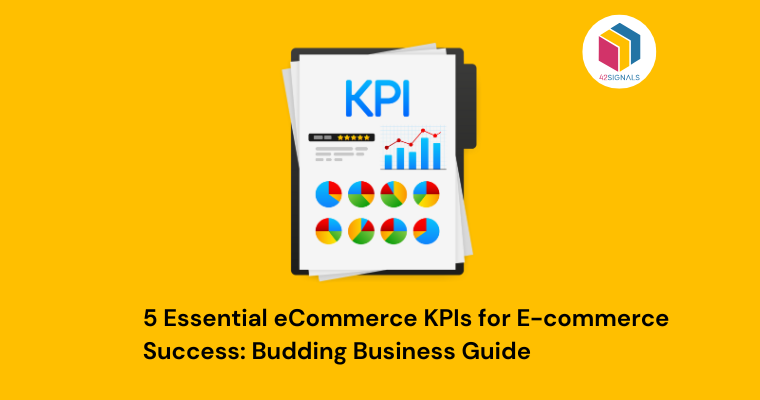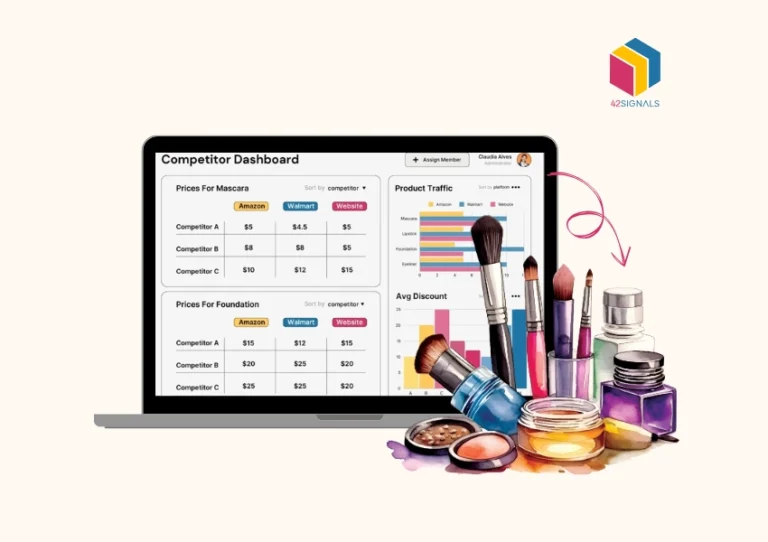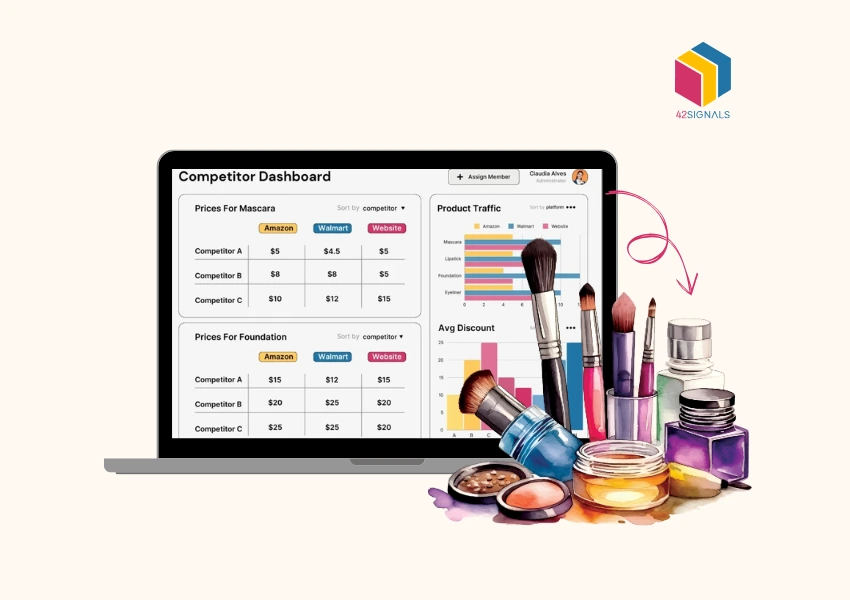What are eCommerce KPIs?
To begin, let’s understand what’s a KPI. KPIs are measurable values that demonstrate how effectively a company is achieving its key business objectives. For eCommerce, these eCommerce KPIs help track progress, optimize strategies, and ensure competitive advantages.
Must-Know eCommerce KPIs
For budding businesses, focusing on the right KPIs can mean the difference between growth and stagnation.
This guide explores five essential eCommerce KPIs that are crucial for success: price fluctuation and competitiveness, purchase frequency, churn rate, repeat purchase rate, and shopping cart abandonment rate.
1. Price Fluctuation and Competitiveness
Importance
Price competitiveness is a crucial aspect of eCommerce KPIs. In a marketplace where consumers can easily compare prices across platforms, maintaining competitive pricing is essential to attract and retain customers. Price fluctuations, driven by market dynamics and inflation, can significantly impact your pricing strategy.
Monitoring Price Fluctuations
- Price Monitoring Tools: Utilize automated tools to track competitor prices in real time. These tools can help you adjust your pricing strategy promptly and ensure you remain competitive.
- Price Alerts: Set up alerts for significant price changes in the market to respond quickly and effectively.
Adapting to Inflation Rates
Inflation rates can affect the purchasing power of consumers, influencing their buying behavior. Staying informed about the average inflation rate and projected inflation rates for 2024 can help you adjust your pricing strategy accordingly.
- Dynamic Pricing: Implement dynamic pricing strategies that allow you to adjust prices based on market conditions and inflation trends.
- Value Proposition: Emphasize the value and quality of your products to justify pricing changes in an inflationary environment.
How to Calculate Percent Change in Price?
To calculate the percent change in price, use the formula:

This calculation helps you understand the extent of price fluctuations over time and adjust your pricing strategies accordingly.
2. Purchase Frequency – Important ECommerce KPIs
Importance
Purchase frequency is another important eCommerce KPI that measures how often a customer buys from your store within a specific period. This KPI is vital for understanding customer loyalty and predicting future revenue. A higher purchase frequency indicates strong customer engagement and satisfaction.
How to Calculate Purchase Frequency?
Purchase frequency can be calculated using the formula:
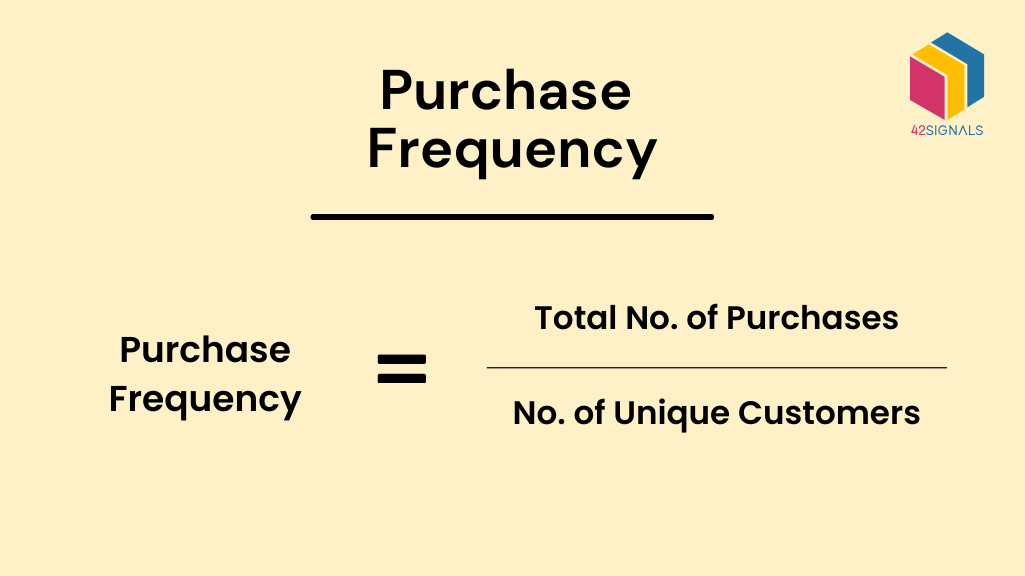
This calculation helps you gauge how often customers are returning to make additional purchases.
Tips for Increasing Purchase Frequency ECommerce KPIs
- Personalized Marketing: Use customer data to create personalized marketing campaigns that target specific segments of your audience. Tailored recommendations and promotions can encourage more frequent purchases.
- Loyalty Programs: Implement loyalty programs that reward customers for repeat purchases. Points-based systems, discounts, and exclusive offers can incentivize customers to buy more frequently.
- Regular Communication: Keep in touch with customers through newsletters, social media, and other channels to inform them about new products, sales, and events. Regular communication can keep your brand top-of-mind and encourage more frequent visits.
3. Churn Rate
Importance
The churn rate measures the percentage of customers who stop buying from your store over a given period. High churn rates can signal issues with customer satisfaction or product quality and negatively impact long-term growth.
How to Calculate Churn Rate?
The churn rate can be calculated using the formula:
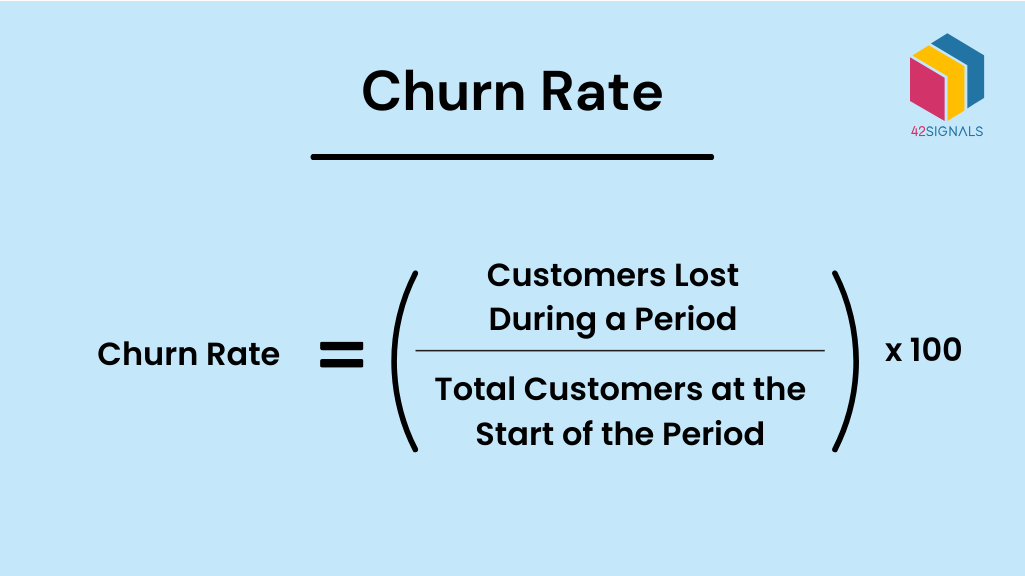
This calculation helps you understand the rate at which customers are leaving your business and identify areas for improvement.
Tips for Reducing Churn Rate
- Improve Customer Service: Ensure that your customer service team is responsive and helpful. Address customer inquiries and complaints promptly to improve satisfaction and retention.
- Solicit Feedback: Regularly seek feedback from customers to understand their needs and preferences. Use this feedback to make improvements to your products, services, and overall customer experience.
- Enhance Product Quality: Continuously assess and improve your product offerings to meet customer expectations. High-quality products that meet customer needs can help reduce churn and increase loyalty.
4. Repeat Purchase Rate
Importance
Repeat purchase rate measures the percentage of customers who make more than one purchase from your store. This eCommerce KPI is crucial for understanding customer loyalty and the effectiveness of your retention strategies.
How to Calculate Repeat Purchase Rate ECommerce KPIs?
The repeat purchase rate can be calculated using the formula:
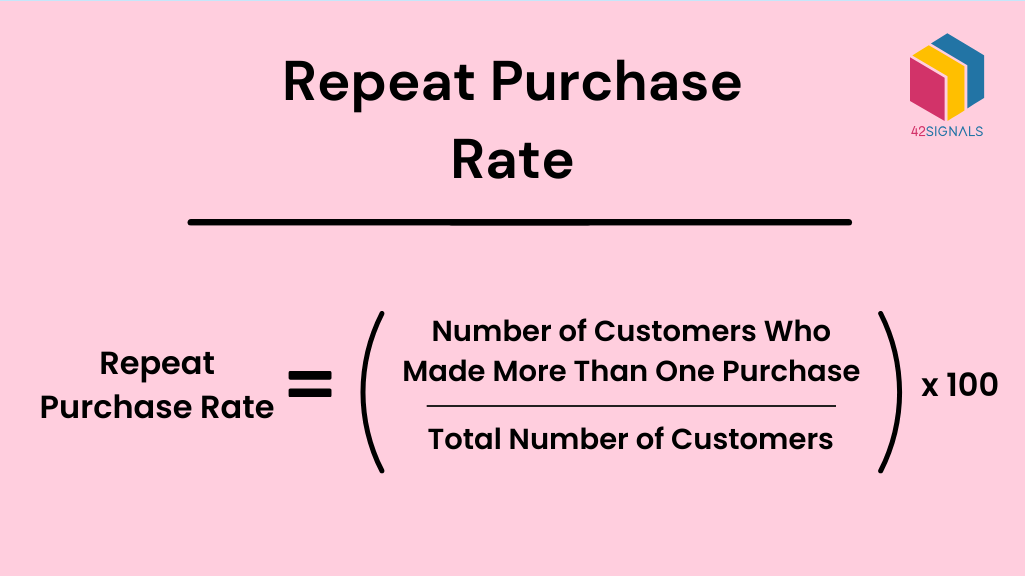
This calculation helps you determine the proportion of customers who return for additional purchases.
Tips for Increasing Repeat Purchase Rate
- Exceptional Customer Experience: Provide a seamless and enjoyable shopping experience, from browsing to checkout. Positive experiences encourage customers to return.
- Exclusive Offers: Offer exclusive discounts, early access to sales, or special promotions to encourage repeat purchases. Customers are more likely to return if they feel they are getting special value.
- After-Sale Engagement: Continue to engage with customers after their initial purchase. Send thank-you emails, request feedback, and offer product recommendations to maintain the relationship.
5. Shopping Cart Abandonment Rate – The Last of the ECommerce KPIs
Importance
The shopping cart abandonment rate measures the percentage of customers who add items to their cart but leave the site without completing the purchase. This KPI is critical because reducing abandonment can significantly boost brand sales and revenue.
How to Calculate Shopping Cart Abandonment Rate?
The shopping cart abandonment rate can be calculated using the formula:
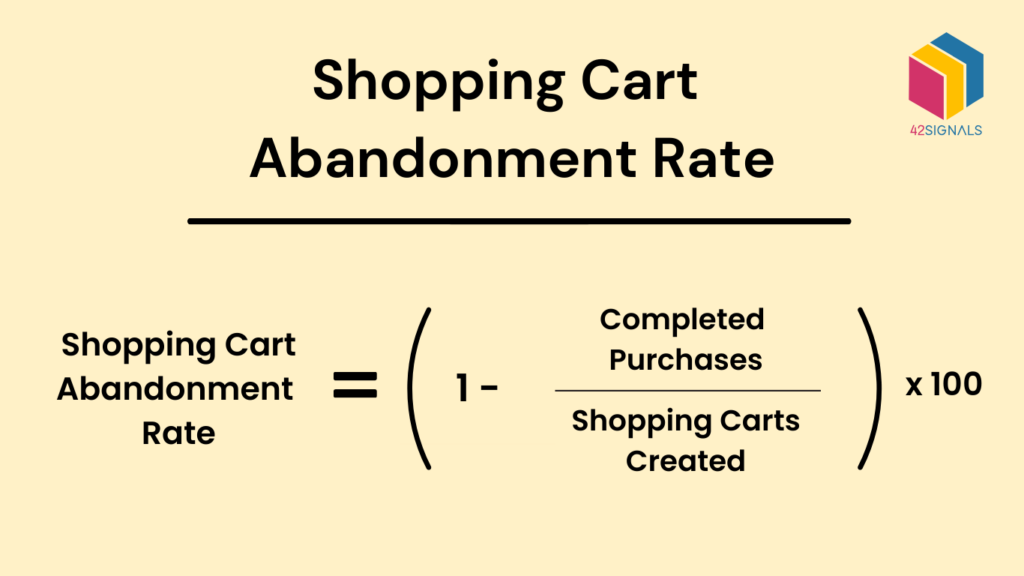
This calculation helps you understand the extent to which customers are leaving items in their cart without completing the purchase.
Tips for Reducing Shopping Cart Abandonment Rate ECommerce KPIs
- Simplify Checkout Process: Ensure that your checkout process is straightforward and easy to navigate. Minimize the number of steps required to complete a purchase and offer guest checkout options.
- Transparent Pricing: Be upfront about shipping costs, taxes, and any additional fees to avoid surprises at checkout. Hidden costs are a common reason for cart abandonment.
- Price Alerts: Use price monitoring tools to ensure competitive pricing and send alerts for abandoned carts to encourage completion. Offering a discount or free shipping on abandoned items can entice customers to complete their purchase.
- Retargeting Campaigns: Implement retargeting campaigns that remind customers of the items left in their cart. Personalized emails or ads can encourage customers to return and complete their purchases.
Conclusion on eCommerce KPIs
Monitoring and optimizing these five essential eCommerce KPIs—price fluctuation and competitiveness, purchase frequency, churn rate, repeat purchase rate, and shopping cart abandonment rate—can significantly enhance your business’s performance and success.
Stay proactive in adapting your strategies to meet changing market conditions and customer needs, and your budding eCommerce business will be poised for success.
Ready to take your eCommerce business to the next level? Schedule a demo with us today to see how our tools can help you effectively monitor and optimize these key KPIs for sustained growth and success.
Frequently Asked Questions
What are the main KPIs for eCommerce?
The main Key Performance Indicators (KPIs) for eCommerce measure the performance of your online store in terms of traffic, conversion, revenue, and customer behavior. Core KPIs include:
- Conversion Rate – The % of visitors who complete a purchase
- Average Order Value (AOV) – Average amount spent per order
- Customer Lifetime Value (CLV) – Projected total revenue from a single customer
- Customer Retention Rate – How well you keep existing customers
- Cart Abandonment Rate – % of shoppers who leave without completing the purchase
- Traffic Sources – How visitors find your store (organic, paid, direct, social)
These KPIs help eCommerce businesses track growth, spot inefficiencies, and optimize performance
What are the 3 C’s of eCommerce?
The 3 C’s of eCommerce describe the three key pillars for success in digital retail:
- Content – High-quality, informative product pages, blogs, videos, and user-generated content
- Commerce – The buying experience: from product selection to checkout, payment, and delivery
- Community – Building trust and loyalty through reviews, social proof, brand advocacy, and customer engagement
When combined, these create a frictionless, value-driven experience that boosts sales and retention.
What are the 5 key performance indicators for customer service?
In eCommerce, customer service KPIs help evaluate support effectiveness and customer satisfaction. The top 5 are:
- First Response Time (FRT) – How quickly the support team responds
- First Contact Resolution (FCR) – % of issues resolved on the first try
- Customer Satisfaction Score (CSAT) – A direct rating of customer happiness
- Net Promoter Score (NPS) – Measures customer loyalty and likelihood to recommend
- Ticket Volume & Backlog – How many customer issues are coming in, and how many remain unresolved
What are eCommerce metrics?
eCommerce metrics are measurable data points that reflect how well your online business is performing across different functions like marketing, sales, logistics, and customer experience. Examples include:
- Revenue metrics – Gross revenue, profit margin, AOV
- Customer metrics – CLV, churn rate, repeat purchase rate
- Traffic metrics – Bounce rate, pages per session, time on site
- Sales funnel metrics – Add-to-cart rate, checkout abandonment, conversion rate
